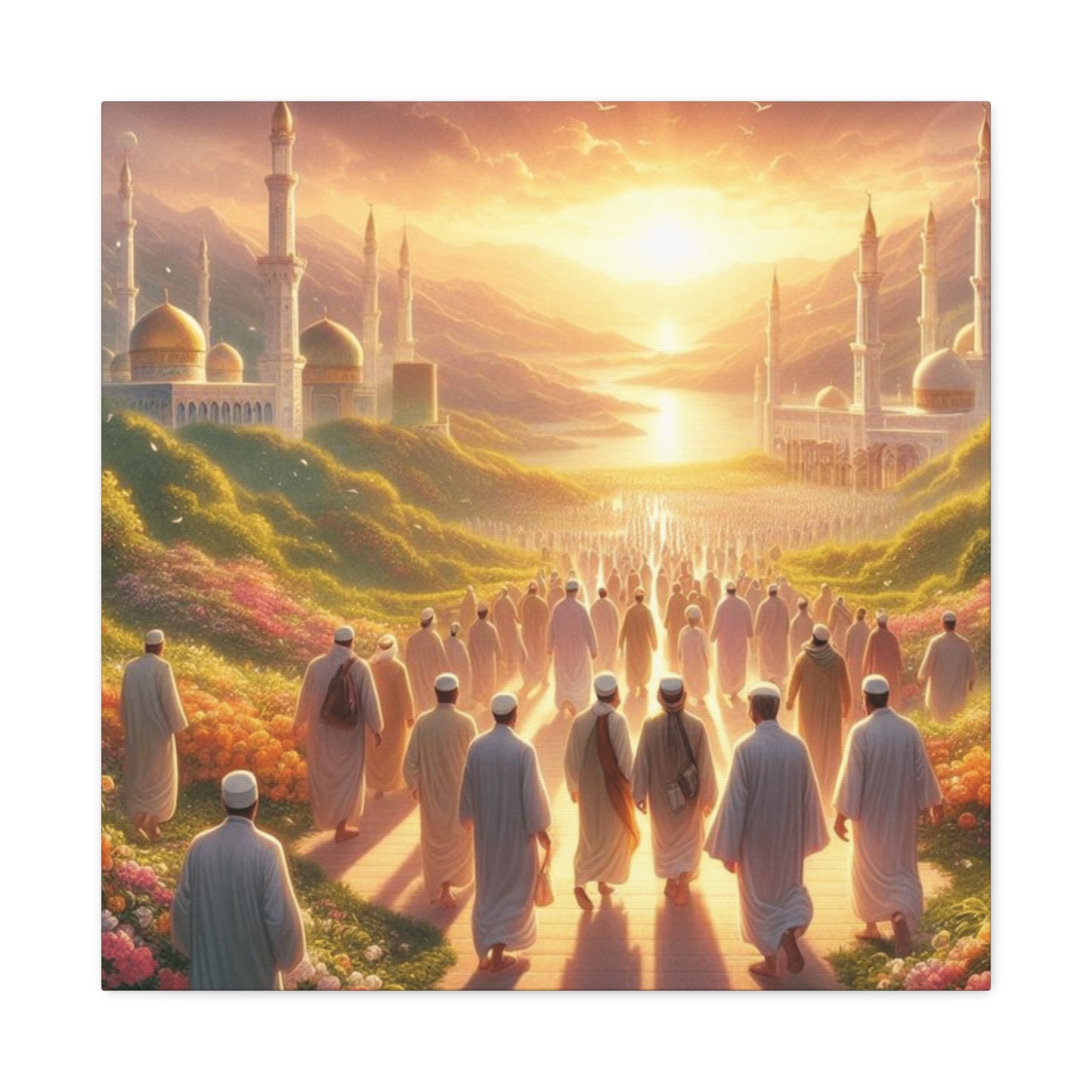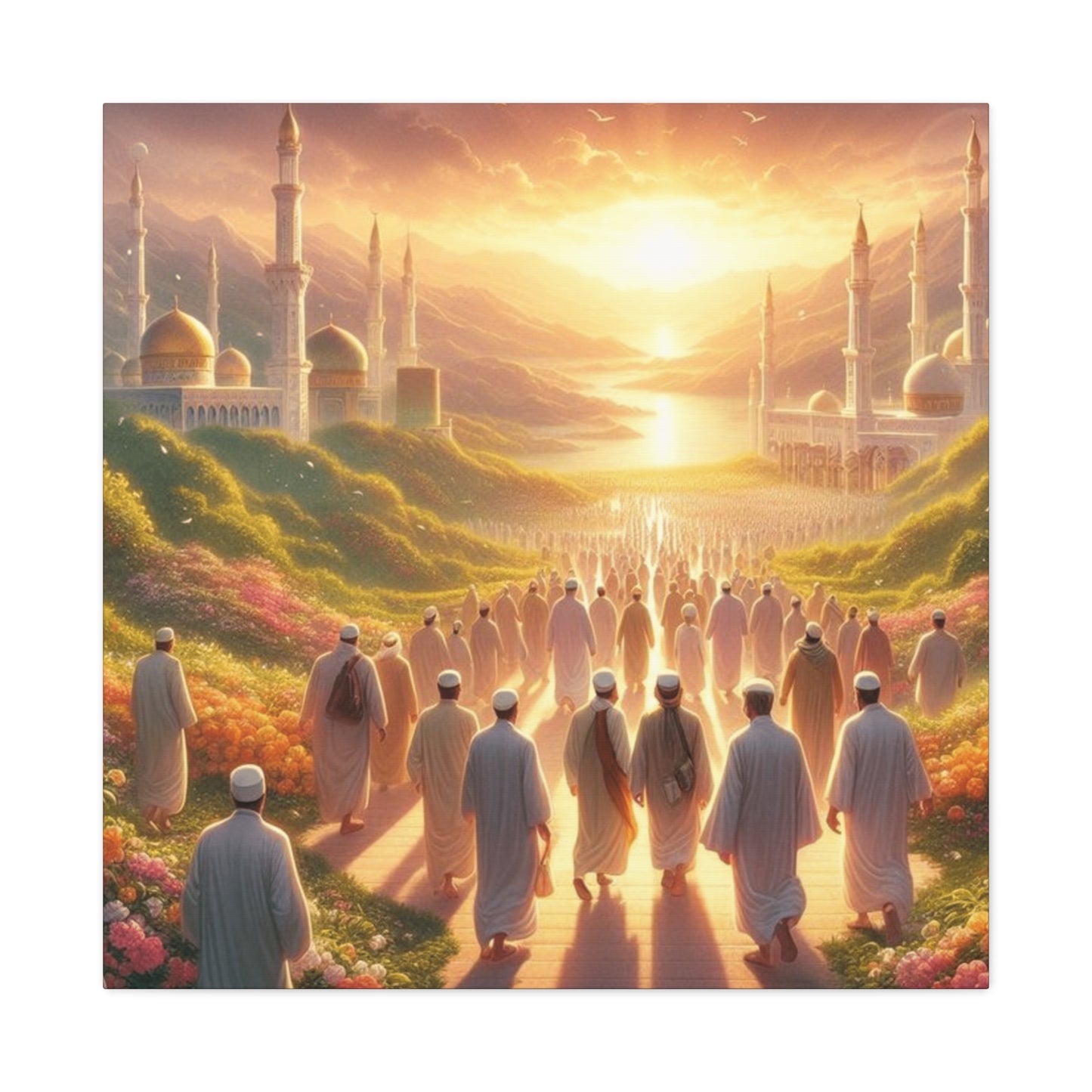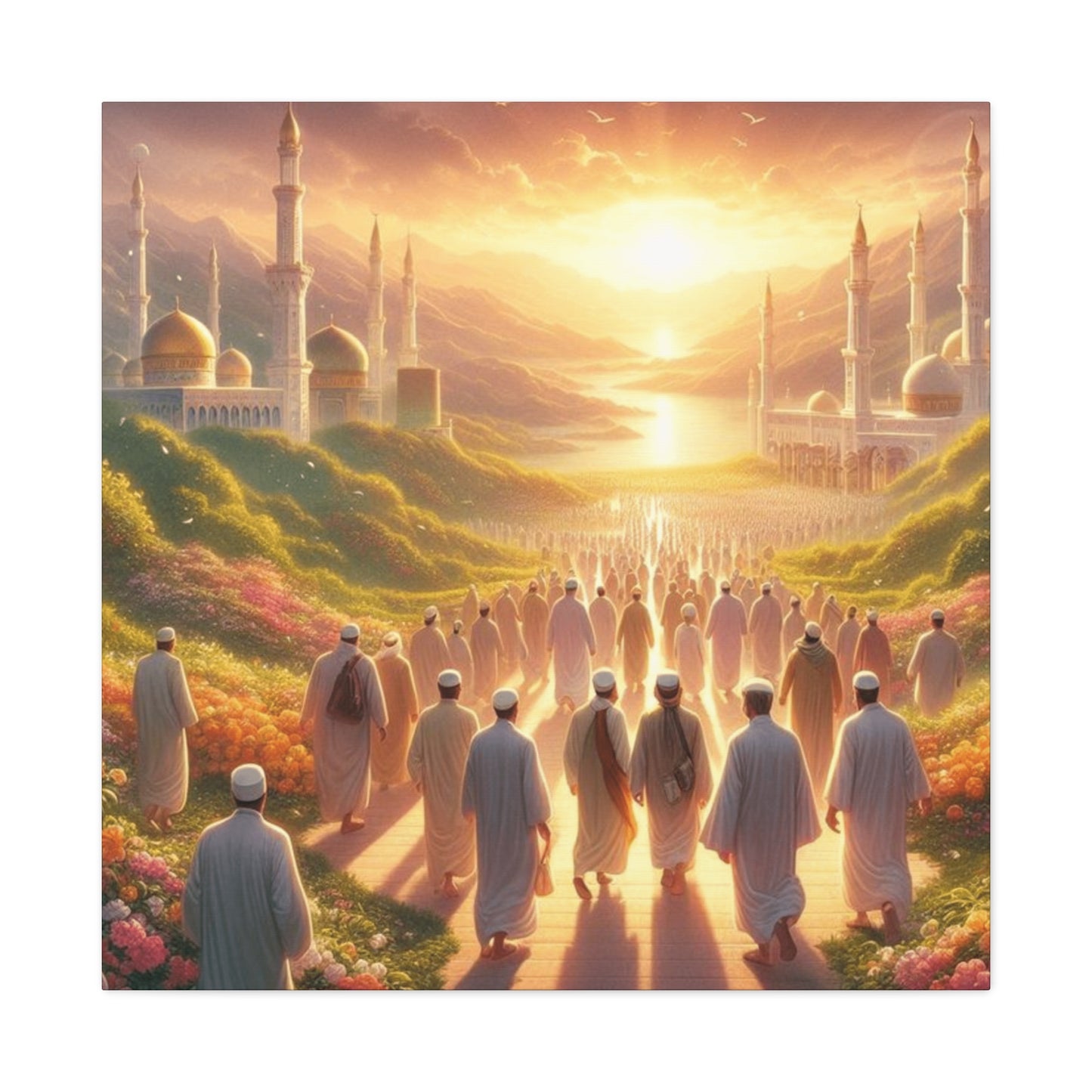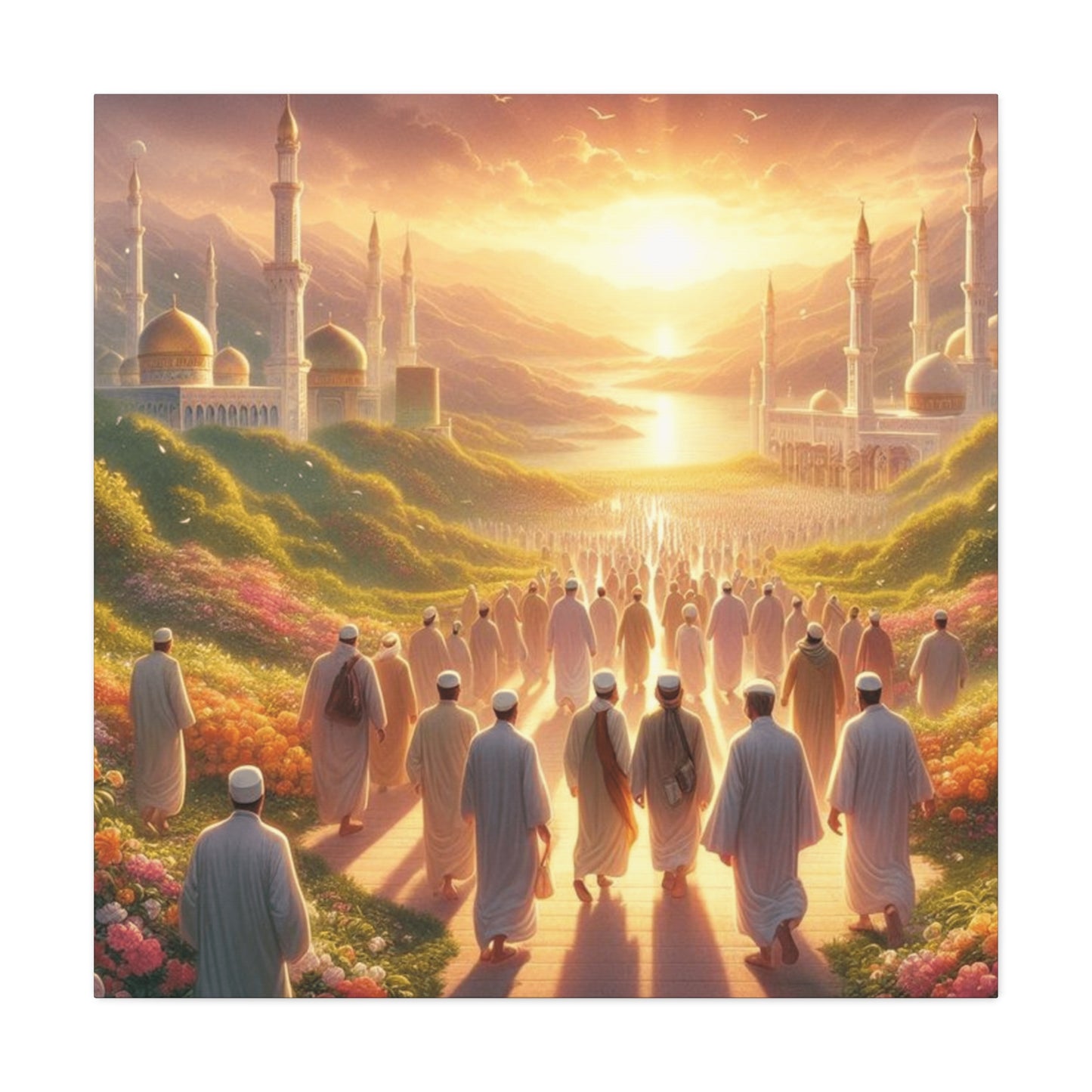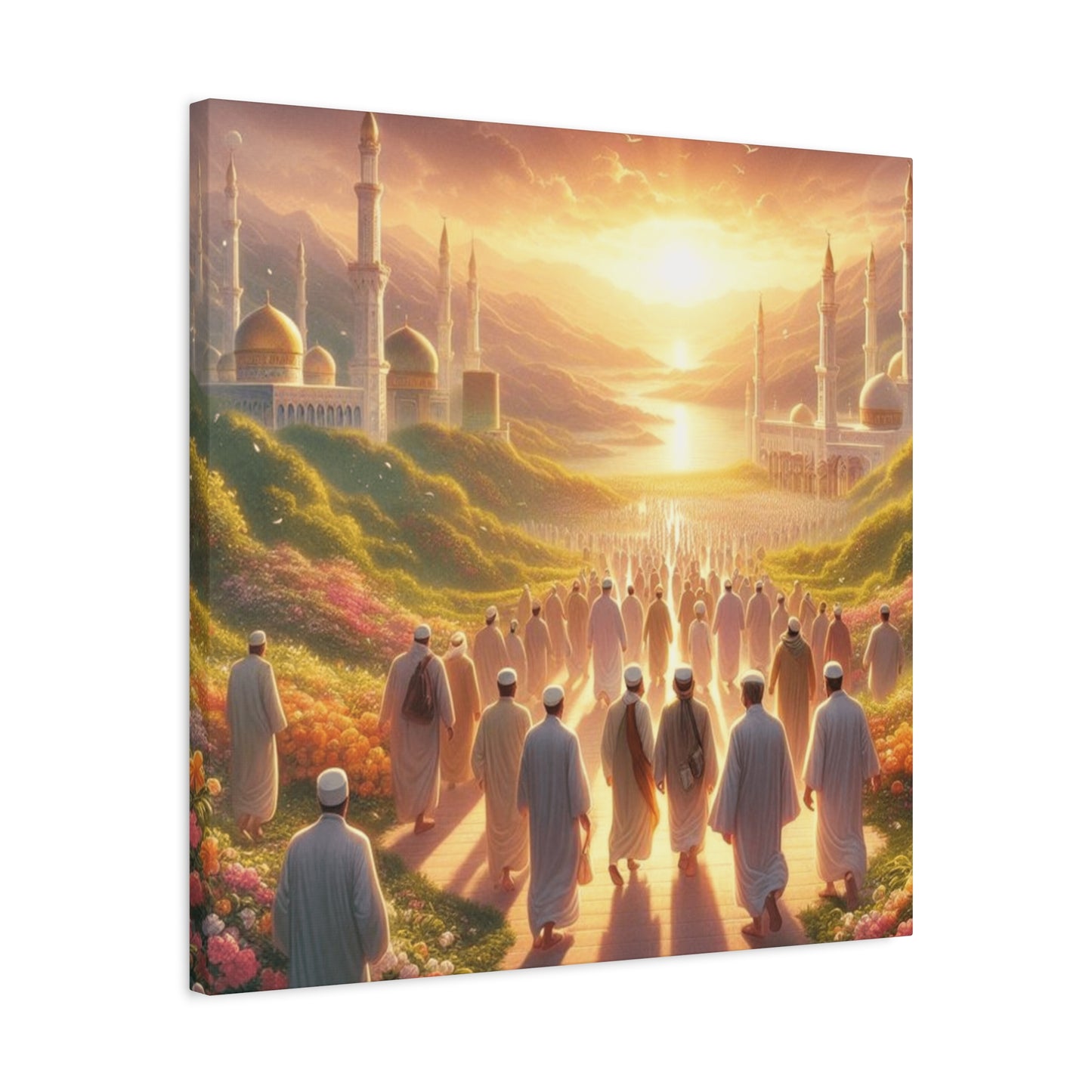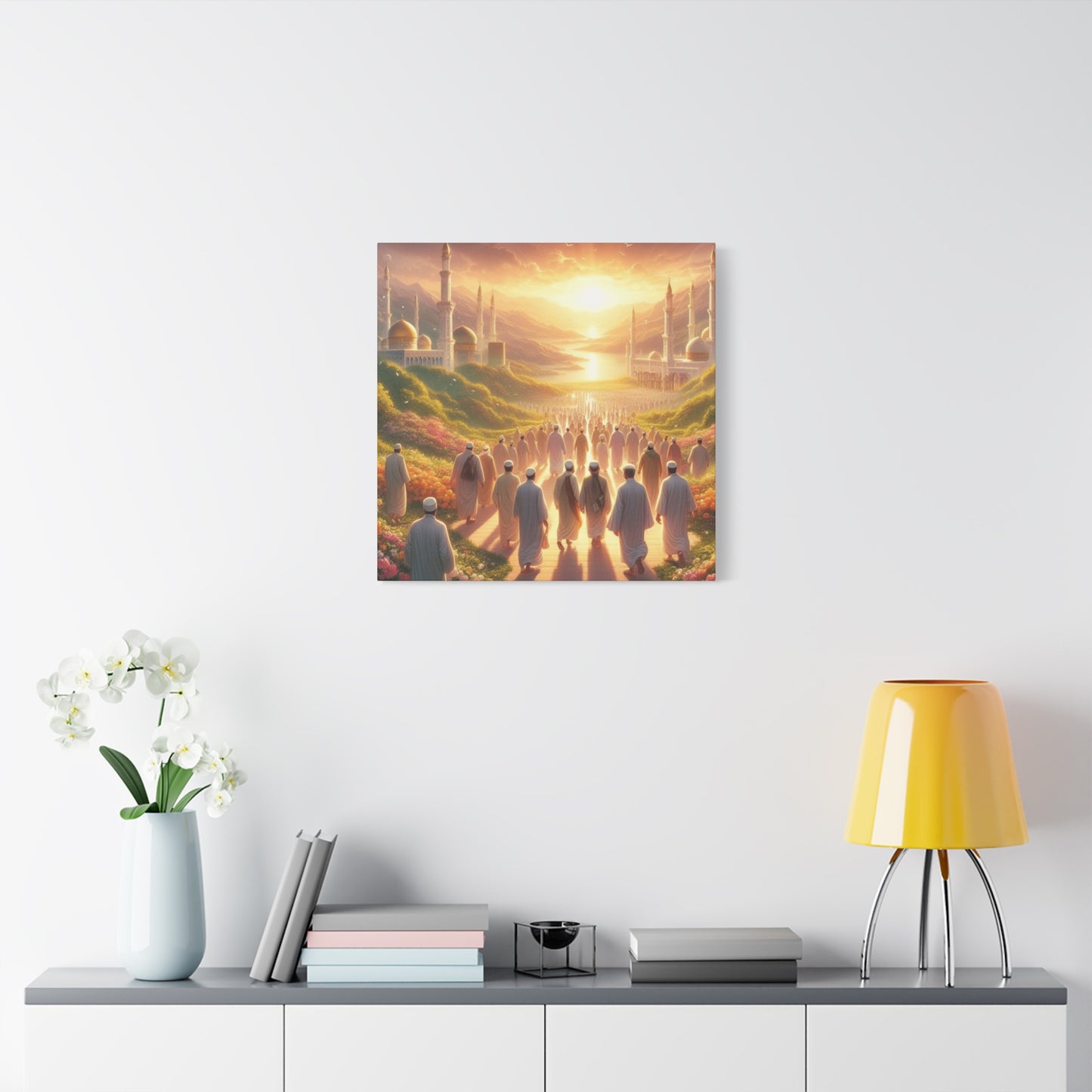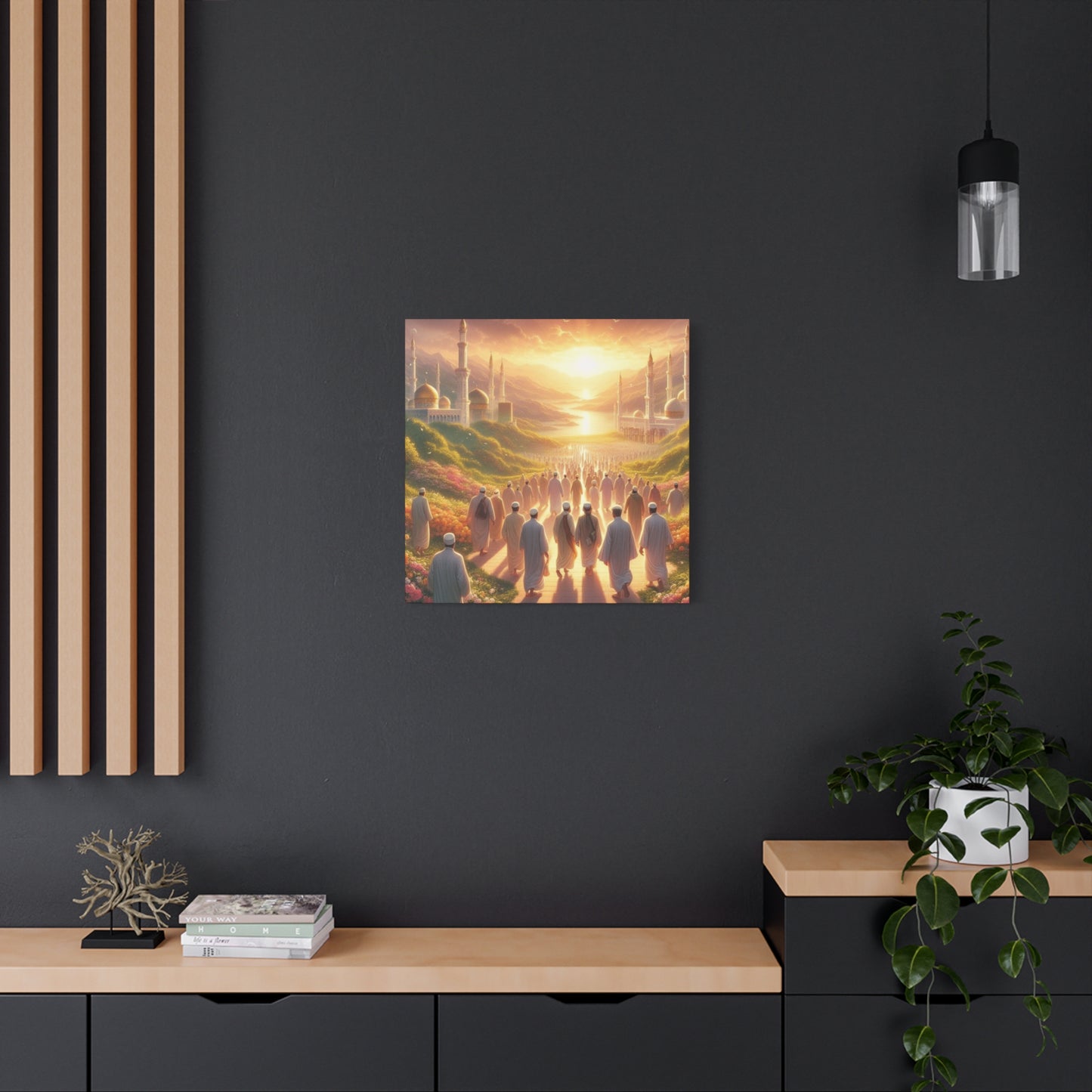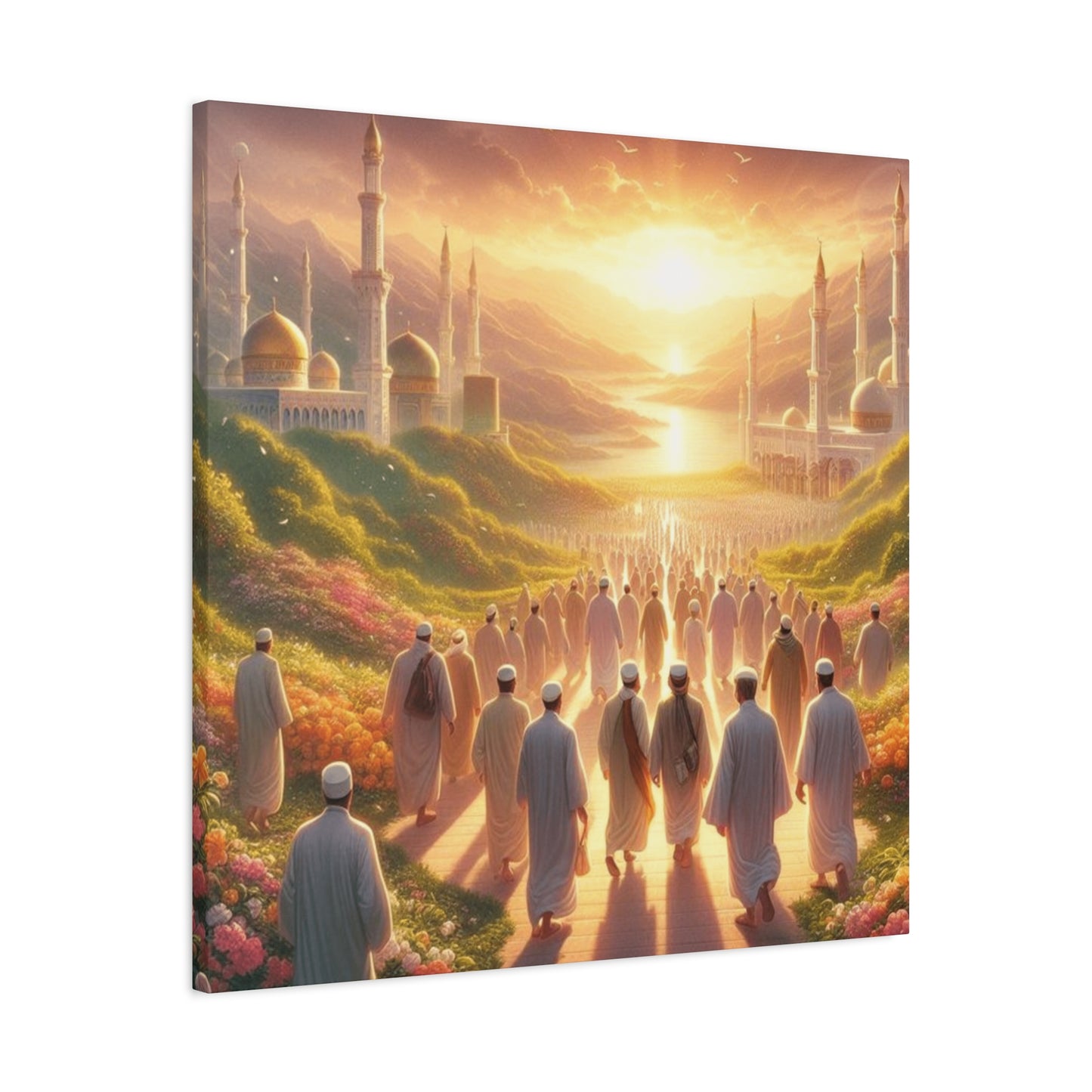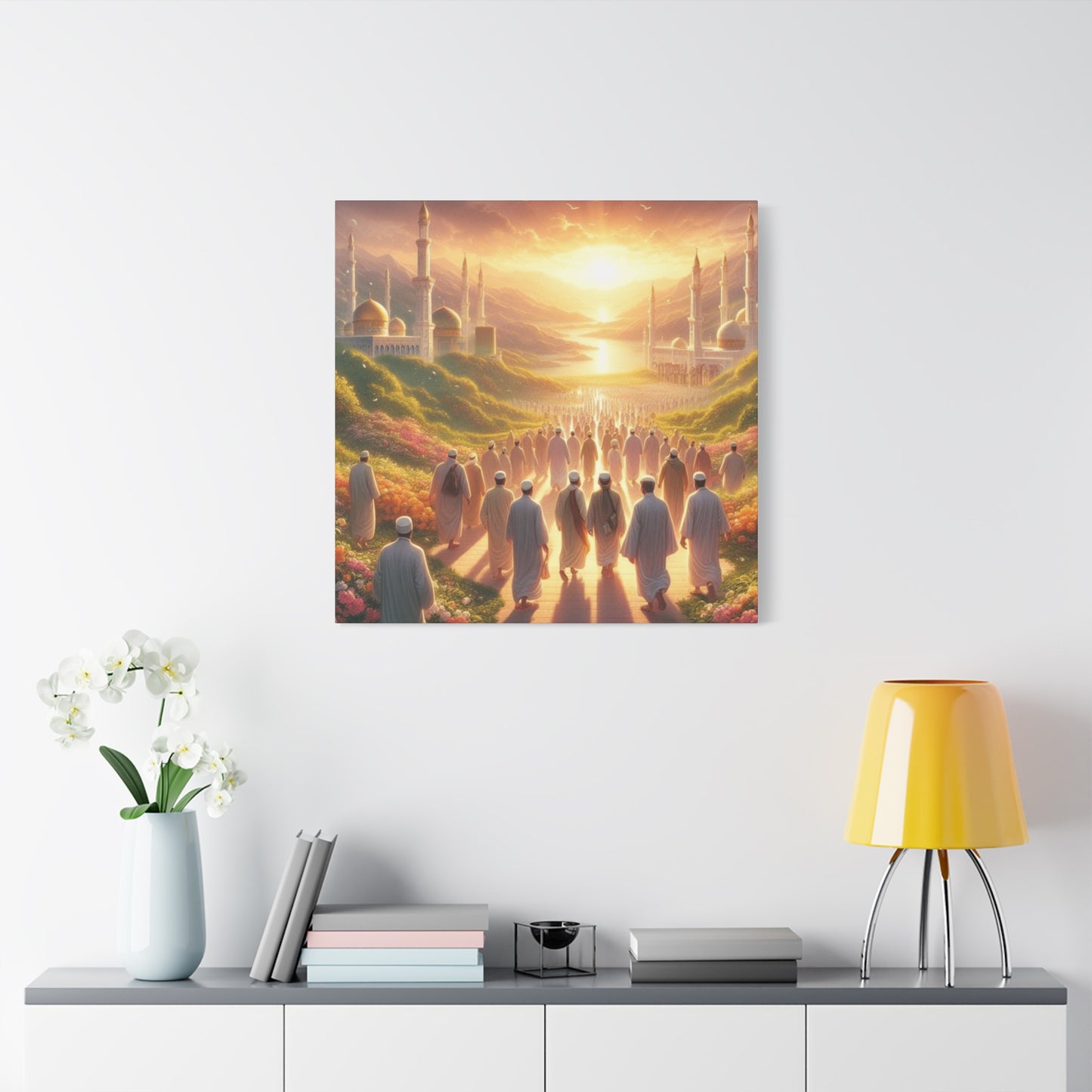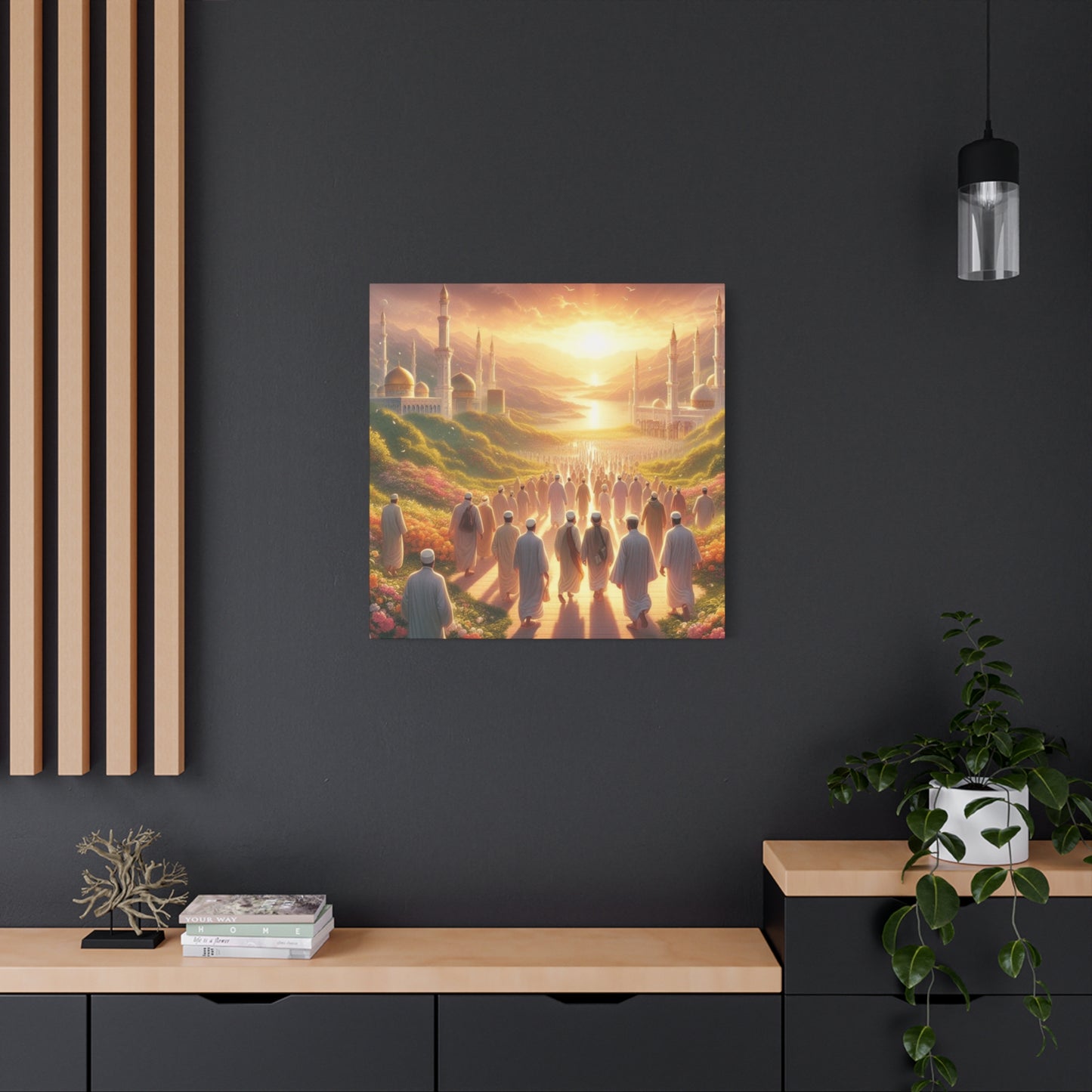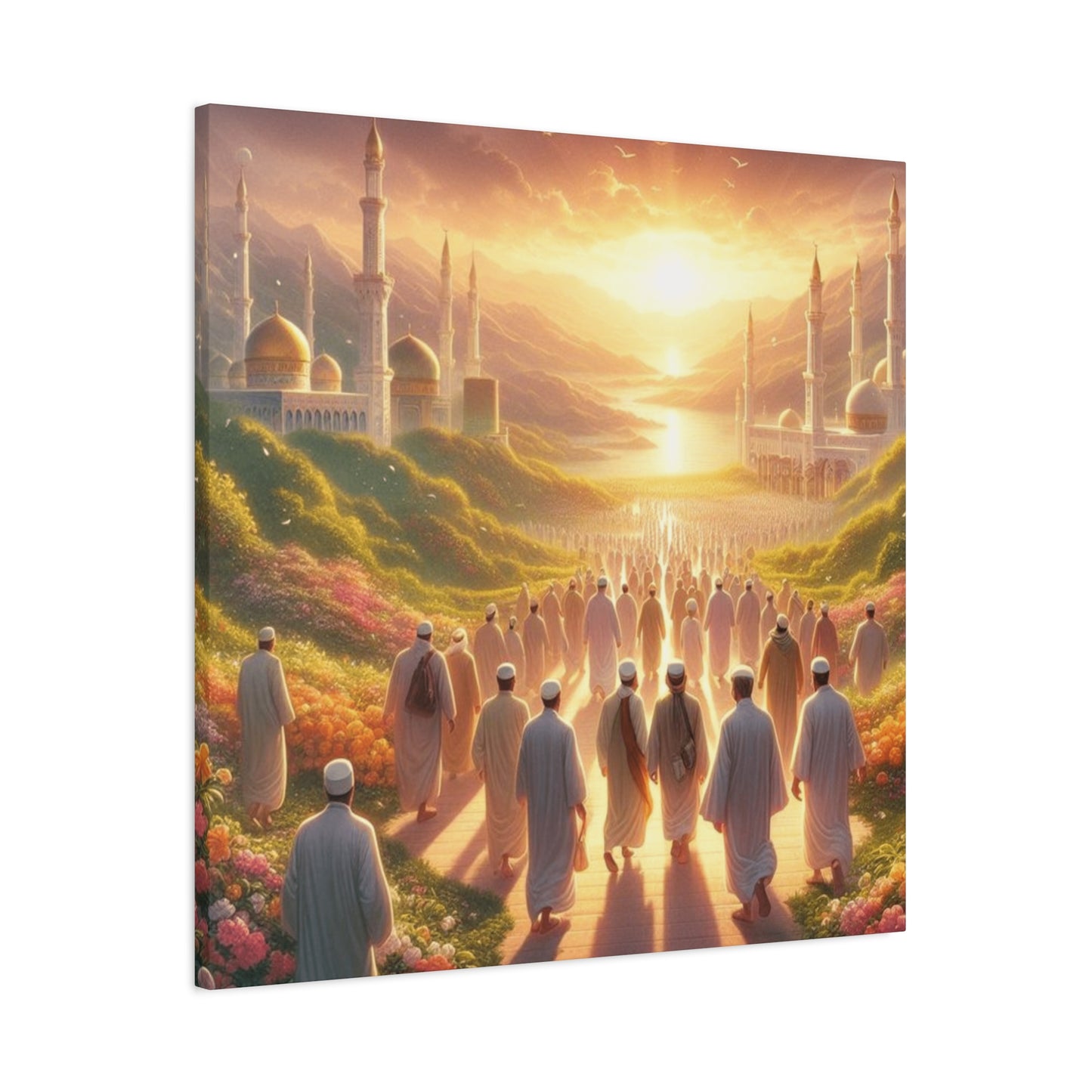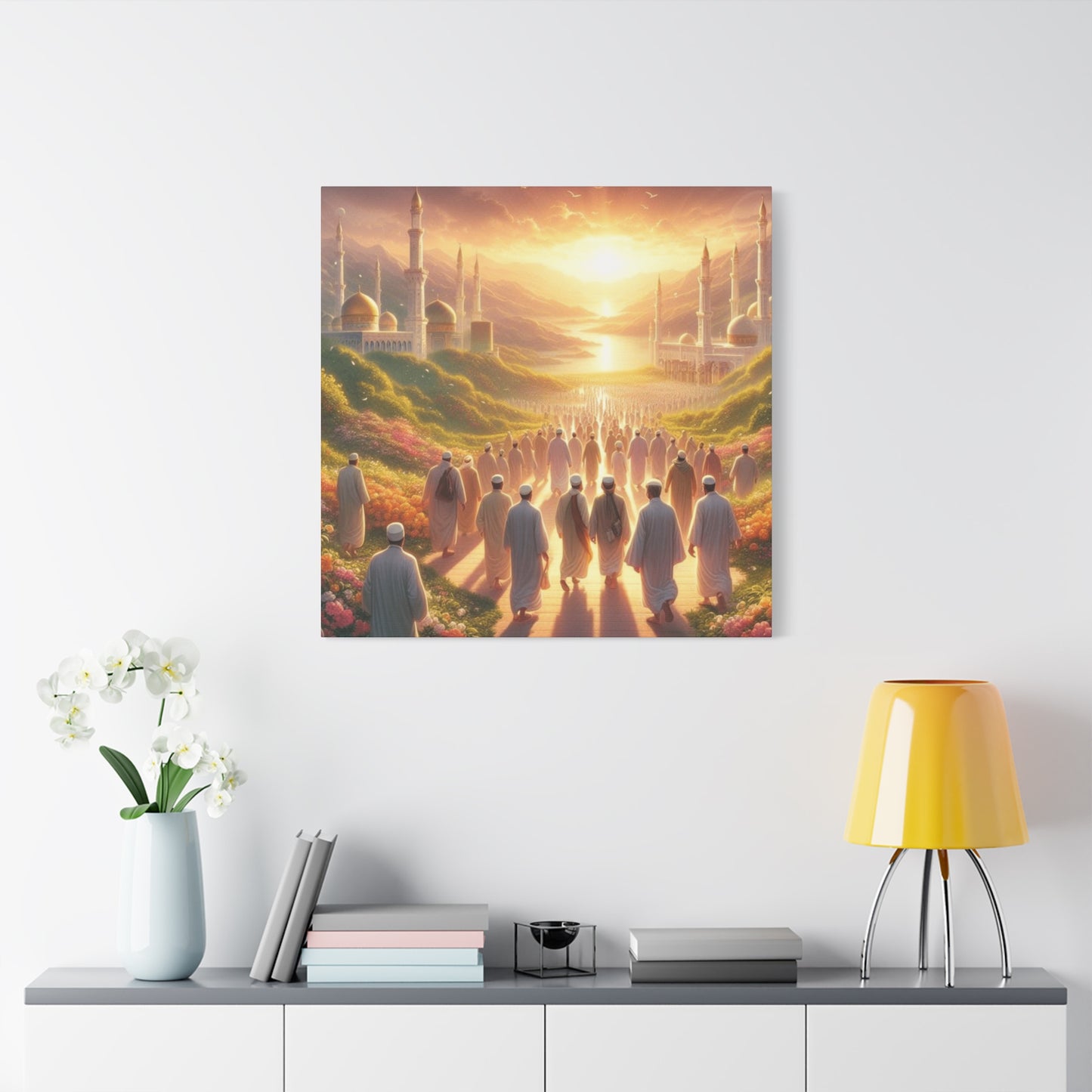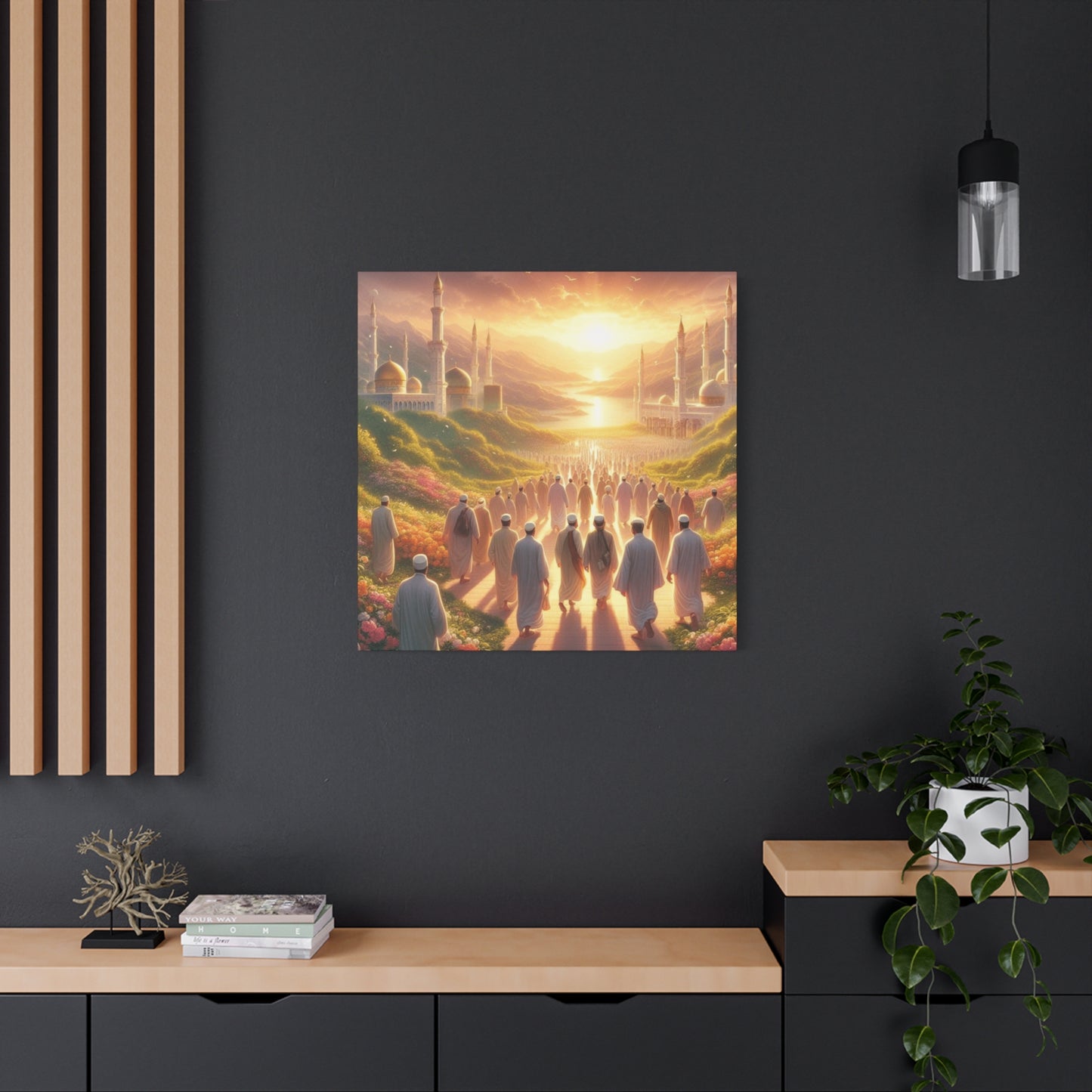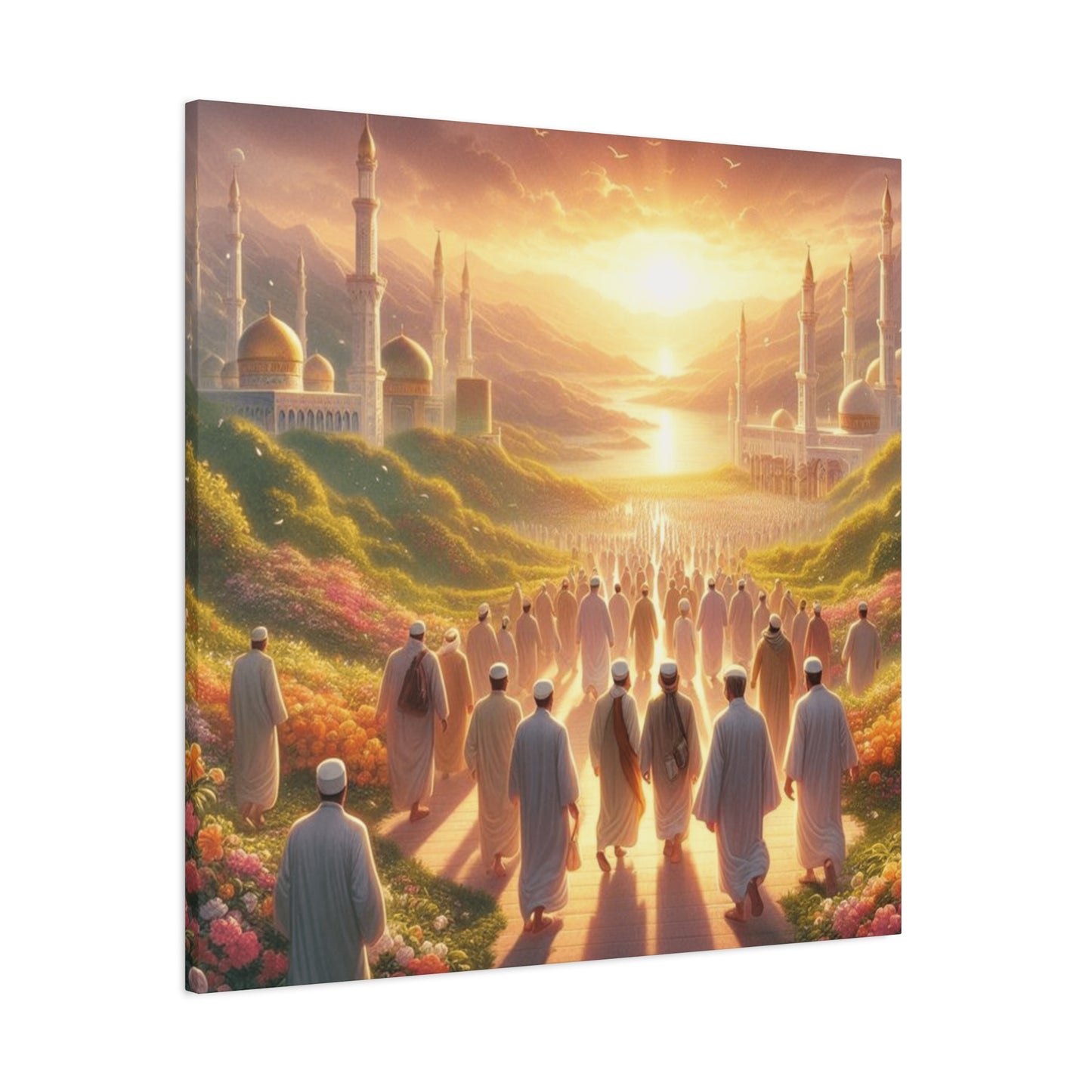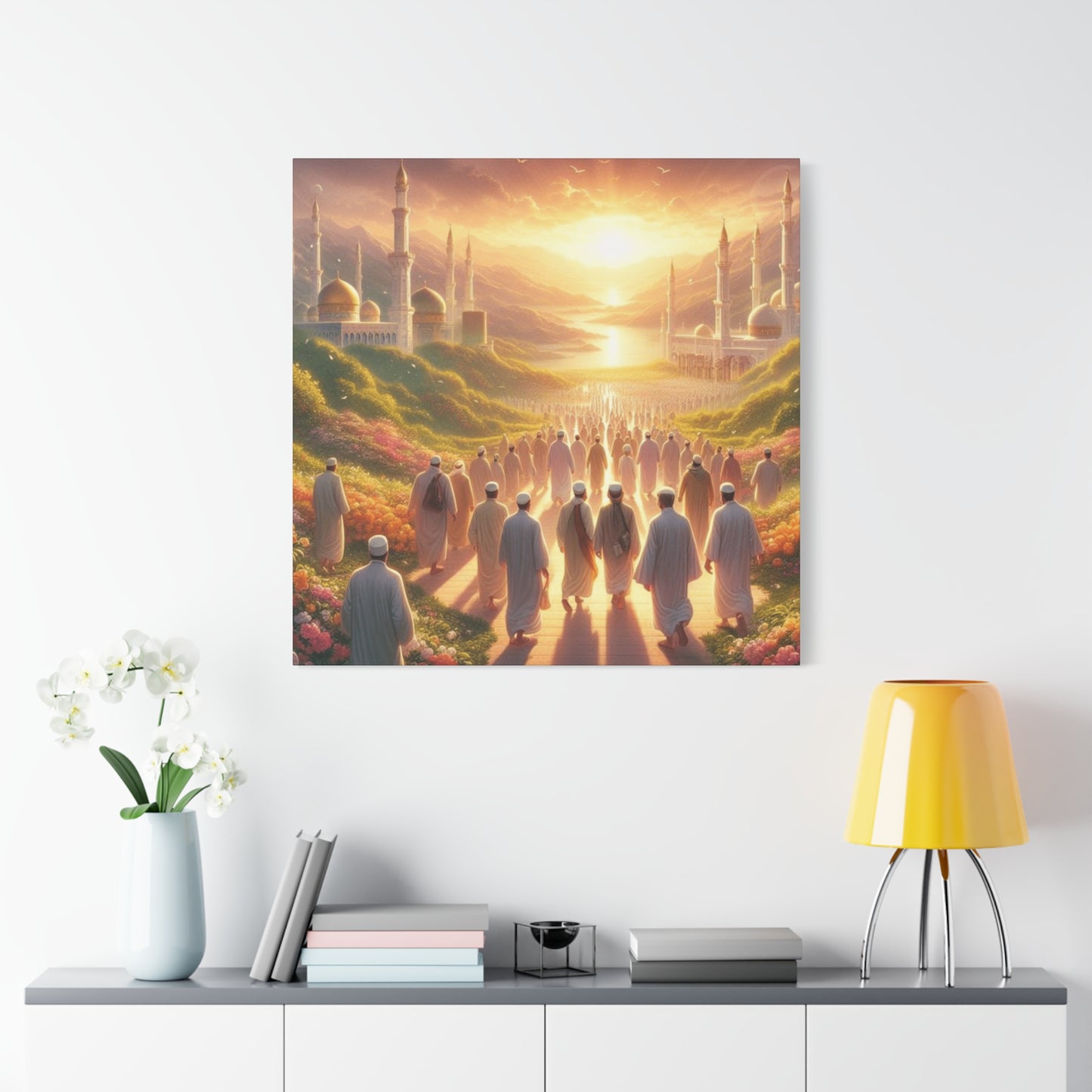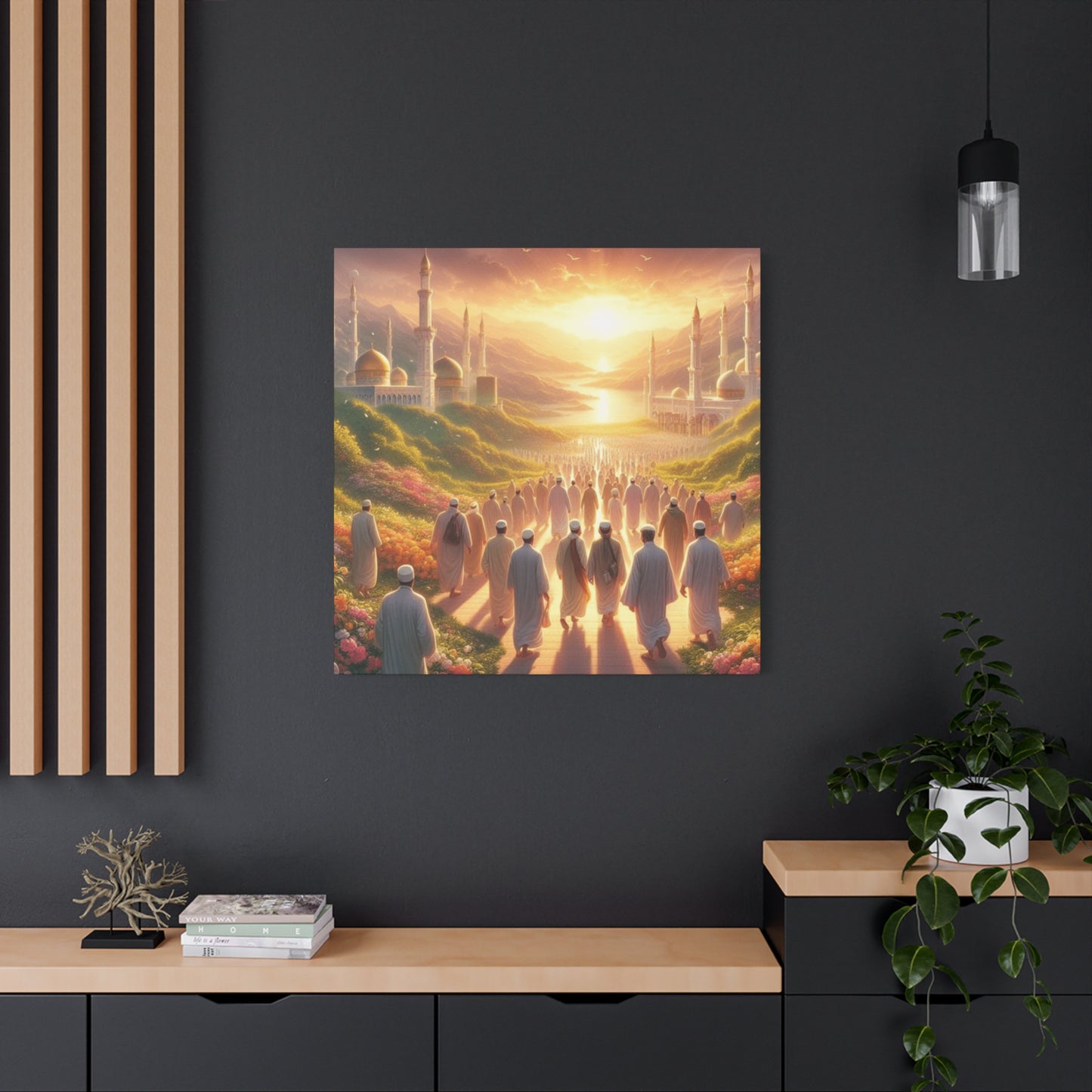Peaceful Elegance: Muharram Wall Art to Inspire Reflection
The sacred month of Muharram holds profound significance in Islamic tradition, marking the first month of the Islamic calendar and commemorating pivotal moments in Islamic history. During this solemn period, many Muslim families seek to create environments that foster contemplation, remembrance, and spiritual connection. Decorative elements that honor this holy month can transform living areas into sanctuaries of reflection and devotion.
Muharram wall art serves as more than mere decoration; it becomes a visual reminder of faith, history, and the values that define Islamic spirituality. These artistic expressions can range from traditional Arabic calligraphy to contemporary interpretations of Islamic motifs, each carrying deep meaning and cultural significance. When selecting pieces for your home, consider how each element contributes to the overall atmosphere of reverence and contemplation that characterizes this holy month.
The beauty of incorporating such artwork lies in its ability to seamlessly blend aesthetic appeal with spiritual purpose. Whether displayed in living rooms, prayer areas, or hallways, these pieces serve as constant reminders of faith and encourage moments of quiet reflection throughout daily routines. The visual impact of well-chosen artwork can enhance the spiritual atmosphere of any home while honoring the traditions and teachings associated with this sacred time.
Consider the placement and lighting of your chosen pieces to maximize their impact. Natural light can enhance the visibility and beauty of calligraphic works, while subtle artificial lighting can create an atmosphere of warmth and contemplation during evening hours. The goal is to create an environment that naturally draws the eye and heart toward contemplation and remembrance.
Establishing Devotional Environments Through Sacred Artistic Expression
The creation of a spiritually enriching environment requires thoughtful consideration of both aesthetic and symbolic elements. During Muharram, the atmosphere of your home can be transformed through carefully selected artwork that reflects the solemnity and significance of this holy period. The process begins with understanding the deeper meanings associated with this month and how visual representations can enhance your family's observance.
Religious artwork serves multiple purposes in creating these sacred environments. It provides visual focal points for contemplation, serves as educational tools for younger family members, and creates a sense of continuity with Islamic tradition and culture. The key lies in selecting pieces that resonate with your personal understanding of faith while remaining appropriate for the solemn nature of the observance.
Color palettes play a crucial role in establishing the right atmosphere. Deep blues, rich greens, and elegant blacks are often favored for their association with dignity, reverence, and contemplation. These colors can be incorporated through artwork, textiles, and complementary decorative elements to create a cohesive and meaningful environment. The subtle use of gold or silver accents can add sophistication while maintaining the appropriate level of solemnity.
The arrangement of artwork should flow naturally throughout your living environment, creating pathways for both physical and spiritual contemplation. Consider how family members move through different areas of your home and position meaningful pieces where they will be encountered naturally during daily activities. This approach ensures that reminders of faith and the significance of Muharram become integrated into everyday life rather than confined to specific religious observances.
Lighting considerations extend beyond mere visibility to encompass the emotional and spiritual impact of your chosen pieces. Soft, warm lighting can enhance the contemplative quality of calligraphic works, while strategic placement near windows can allow natural light to illuminate artwork during different times of day, creating varying moods and atmospheres that complement the rhythm of daily prayers and reflection.
The Transformative Power of Muharram Wall Art in Fostering Inner Peace
The relationship between visual art and spiritual contemplation has been recognized across cultures and throughout history. In the context of Muharram observance, carefully chosen artwork can serve as gateways to deeper reflection and connection with Islamic teachings. The transformative power of these visual elements lies in their ability to redirect attention from worldly concerns toward matters of faith, history, and personal growth.
Contemporary Muslim families often seek ways to maintain connection with their spiritual heritage while navigating modern life. Muharram wall art provides an elegant solution by creating visual anchors that remind household members of important religious principles and historical events. These reminders can be particularly meaningful during busy periods when formal religious study or extended contemplation may be challenging to incorporate into daily schedules.
The psychological impact of surrounding yourself with meaningful imagery cannot be understated. When artwork reflects your deepest values and beliefs, it creates an environment that naturally encourages positive thinking, peaceful contemplation, and spiritual growth. This is particularly relevant during Muharram, when the focus shifts toward remembrance, mourning, and spiritual purification.
The selection process for such meaningful artwork requires careful consideration of both personal preferences and religious appropriateness. While individual tastes may vary, the chosen pieces should consistently reflect the dignity and reverence associated with this holy month. This balance between personal expression and religious observance creates opportunities for meaningful family discussions about faith, tradition, and the significance of the artwork itself.
Educational opportunities arise naturally when children and visitors encounter these visual elements. Rather than requiring formal instruction, the presence of meaningful artwork creates organic moments for sharing knowledge about Islamic history, the significance of Muharram, and the broader context of Muslim faith and practice. These informal educational moments often prove more impactful than structured lessons because they arise from genuine curiosity and interest.
Meaningful Symbolic Elements in Sacred Decorative Design
Islamic art has a rich tradition of symbolic representation that conveys deep spiritual meanings through geometric patterns, calligraphy, and natural motifs. During Muharram, these symbols take on particular significance as they connect contemporary observers with historical events and enduring religious principles. Understanding these symbolic elements enhances both the selection and appreciation of appropriate artwork for your home.
Geometric patterns in Islamic art represent the infinite nature of Allah and the underlying order of creation. These patterns, when incorporated into Muharram wall art, serve as visual reminders of divine presence and the mathematical precision underlying the natural world. The repetitive nature of these designs can also facilitate meditative contemplation, making them particularly appropriate for creating peaceful, reflective environments.
Calligraphic representations of Quranic verses or religious phrases carry the power of sacred text while serving as beautiful artistic expressions. The Arabic script itself is considered a form of art, with different styles conveying varying emotions and emphasis. During Muharram, verses related to patience, remembrance, and divine mercy are particularly meaningful and can provide comfort and guidance to household members throughout the observance period.
Natural motifs such as palm fronds, roses, or flowing water can represent paradise, beauty, and spiritual purification. These elements, when stylized appropriately, can add warmth and life to religious artwork while maintaining the dignity required for Muharram observance. The key lies in selecting representations that enhance rather than distract from the contemplative purpose of the artwork.
Color symbolism adds another layer of meaning to religious artwork. Green, traditionally associated with Islam and paradise, can represent hope and renewal. Deep blues may symbolize infinity and divine presence, while black can represent the solemnity of mourning and remembrance that characterizes Muharram. Understanding these associations allows for more thoughtful selection and arrangement of artwork throughout your home.
The integration of these symbolic elements should feel natural and harmonious rather than forced or overly complex. The most effective religious artwork communicates its message clearly while maintaining aesthetic appeal that enhances rather than overwhelms the living environment. This balance ensures that the artwork serves its spiritual purpose while contributing positively to the overall atmosphere of your home.
Graceful Script Traditions for Sacred Home Decoration
Arabic calligraphy represents one of the most revered art forms in Islamic culture, combining the beauty of written language with deep spiritual significance. During Muharram, incorporating calligraphic elements into home decoration provides opportunities to display sacred texts while creating visually striking focal points that enhance the contemplative atmosphere of this holy period.
The selection of appropriate calligraphic pieces requires consideration of both content and artistic style. Verses from the Quran that emphasize patience, remembrance of Allah, and the temporary nature of worldly life are particularly meaningful during Muharram. These texts not only provide spiritual guidance but also serve as beautiful decorative elements that can complement various architectural styles and color schemes.
Different calligraphic styles convey varying emotional tones and aesthetic qualities. Kufic script, with its angular and geometric characteristics, projects strength and permanence, making it appropriate for displaying foundational religious principles. Naskh script, with its flowing curves and readable format, is ideal for longer passages that household members might read and contemplate regularly. Thuluth script, known for its elegance and decorative qualities, can add sophistication to formal living areas while maintaining religious significance.
The physical presentation of calligraphic artwork requires thoughtful consideration of materials, framing, and placement. High-quality printing or hand-lettering on appropriate paper or canvas ensures longevity and maintains the dignity of the sacred text. Frames should complement rather than compete with the calligraphy itself, with simple, elegant designs often proving most effective for religious contexts.
Placement strategies for calligraphic artwork should consider both visibility and appropriateness. Living areas, entrance halls, and study areas are typically suitable locations, while bedrooms and bathrooms may be less appropriate depending on the specific content and family preferences. The goal is to position these pieces where they will be encountered regularly and can serve their dual purpose as decoration and spiritual reminder.
The educational value of calligraphic artwork extends beyond mere decoration to provide opportunities for learning and discussion. Family members can practice reading Arabic script, discuss the meaning of displayed verses, and develop deeper appreciation for the artistic traditions of Islamic culture. These learning opportunities make calligraphic artwork particularly valuable for households with children or individuals seeking to strengthen their connection with Islamic heritage.
Thoughtful Decoration Approaches for Sacred Month Observance
The approach to decorating during Muharram requires sensitivity to the solemn nature of this observance while creating an environment that enhances spiritual reflection and family togetherness. This balance can be achieved through careful selection of decorative elements that honor the significance of the month without creating an atmosphere that feels heavy or oppressive.
Minimalism often proves most effective in religious decoration, allowing individual pieces to make strong impacts without creating visual clutter or distraction. A single, well-chosen calligraphic piece or symbolic artwork can serve as a powerful focal point that draws attention and encourages contemplation. This approach also demonstrates respect for the solemnity of the observance by avoiding excessive decoration that might trivialize the religious significance.
The integration of decorative elements should flow naturally with your existing home environment rather than creating stark contrasts that feel artificial or temporary. Muharram observance extends for the entire first month of the Islamic calendar, making it important that decorative choices enhance daily life rather than creating inconvenience or discomfort. This consideration ensures that the spiritual benefits of the decoration are sustained throughout the observance period.
Lighting plays a crucial role in creating the appropriate atmosphere for Muharram observance. Soft, warm lighting can enhance the contemplative quality of religious artwork while maintaining the dignity appropriate to this solemn period. Avoid harsh or overly bright illumination that might detract from the peaceful atmosphere you seek to create. Natural light, when available, often provides the most flattering and spiritually appropriate illumination for religious artwork.
The inclusion of natural elements such as plants or flowers can add life and beauty to religious decorations while maintaining appropriateness for the observance. Simple arrangements using flowers that hold religious significance or plants that require care and attention can serve as reminders of the divine creation and the importance of nurturing both spiritual and physical life.
Flexibility in decorative arrangements allows for adaptation throughout the month as family observance practices may vary. Some periods may call for more contemplative environments, while times of community gathering might benefit from arrangements that facilitate discussion and shared reflection. Planning decorative elements that can be easily adjusted ensures that your home environment remains supportive of varying religious practices and family needs.
The Significance of Artistic Expression in Religious Commemoration
Religious commemoration through artistic expression provides communities and families with tangible connections to historical events and spiritual teachings. During Muharram, this connection becomes particularly meaningful as the month commemorates significant events in Islamic history that continue to influence Muslim faith and practice. The role of artwork in these commemorations extends beyond decoration to encompass education, emotional support, and community building.
Historical events commemorated during Muharram carry profound emotional and spiritual weight for Muslim communities worldwide. Artistic representations of these events, whether through symbolic imagery or calligraphic presentations of relevant texts, help contemporary observers connect with the experiences and teachings of earlier generations. This connection fosters continuity of faith and cultural identity across time and geographic boundaries.
The emotional support provided by religious artwork becomes particularly important during periods of commemoration that involve mourning and reflection. Beautiful, meaningful artwork can provide comfort and hope while acknowledging the solemnity of historical events. This dual function of acknowledging difficulty while providing spiritual uplift reflects the complexity of human religious experience and the sophisticated role that art plays in supporting faith communities.
Community building through shared artistic traditions strengthens bonds between families and neighbors who participate in similar observance practices. When households in a community incorporate similar artistic elements or themes, it creates a sense of shared identity and mutual support that enhances the collective experience of religious observance. This community aspect of artistic expression extends the impact of individual decorative choices beyond the boundaries of single households.
Educational opportunities embedded in religious artwork serve multiple generations within families and communities. Older community members can share their knowledge and interpretation of artistic elements with younger people, while contemporary artists can explore new ways to express traditional themes and values. This ongoing dialogue between tradition and innovation keeps religious art relevant and meaningful for each generation.
The preservation of artistic traditions through contemporary application ensures that valuable cultural knowledge and skills continue to develop and evolve. When families choose to incorporate traditional artistic elements into their Muharram observances, they participate in maintaining cultural heritage while adapting it to contemporary life circumstances. This process of preservation and adaptation strengthens cultural identity and ensures continuity for future generations.
Understated Yet Profound Sacred Artistic Prints
The power of religious artwork often lies not in complexity or elaborateness but in the ability to convey profound meaning through simple, elegant design. During Muharram observance, prints that embody this principle of meaningful simplicity can provide powerful spiritual impact while fitting naturally into contemporary home environments. These pieces demonstrate that spiritual significance need not require elaborate presentation to achieve meaningful effect.
The selection of impactful prints requires attention to both visual composition and spiritual content. Effective pieces often combine clean, uncluttered design with meaningful text or symbolic elements that invite contemplation without overwhelming the viewer. This approach ensures that the artwork serves its intended spiritual purpose while maintaining aesthetic appeal that enhances rather than dominates the living environment.
Contemporary printing techniques allow for high-quality reproduction of traditional artistic elements, making meaningful religious artwork accessible to families regardless of budget constraints. Digital printing on quality paper or canvas can produce pieces that rival traditional artistic techniques while allowing for customization of size, color, and framing to suit individual home environments and personal preferences.
The versatility of printed artwork makes it particularly suitable for families who may need to adapt their living environments for different purposes throughout the month. Prints can be easily repositioned, temporarily stored, or grouped with other elements to create varying arrangements that support different types of religious observance and family activities. This flexibility ensures that spiritual decoration enhances rather than constrains family life.
The accessibility of printed artwork also makes it possible for families to acquire multiple pieces that can be used individually or in combination to create more complex decorative arrangements. A collection of coordinated prints can allow for seasonal rotation, special emphasis during particular periods of observance, or adaptation to different areas of the home as family needs and preferences evolve.
Quality considerations for printed religious artwork extend beyond mere visual appeal to encompass longevity and appropriateness for the sacred content being displayed. Archival-quality printing and appropriate paper selection ensure that meaningful pieces maintain their beauty and dignity over time, while proper mounting and framing protect the artwork and enhance its presentation in your home environment.
Utilizing Sacred Artwork for Education and Spiritual Growth
Religious artwork serves dual purposes in the home environment, functioning simultaneously as decoration and educational resource. During Muharram, this educational aspect becomes particularly valuable as families seek to deepen their understanding of Islamic history and strengthen their connection with religious traditions. The strategic selection and placement of educational artwork can create ongoing learning opportunities that enhance spiritual development.
The educational potential of religious artwork extends across all age groups within the family, from young children who are just beginning to learn about their faith to adults seeking to deepen their spiritual understanding. Visual learning through artwork can be particularly effective for children, who often respond more readily to images and symbols than to purely textual instruction. This multi-generational educational value makes religious artwork a valuable investment for family spiritual development.
Interactive engagement with educational artwork creates opportunities for meaningful family discussions about faith, history, and personal spiritual development. When artwork includes elements that invite questions or exploration, it naturally generates conversations that might not arise in more formal educational settings. These organic learning moments often prove more impactful and memorable than structured lessons because they arise from genuine curiosity and interest.
The development of cultural literacy through exposure to religious artwork helps family members better understand their heritage and place within the broader Muslim community. Familiarity with traditional artistic elements, symbolic meanings, and historical references enhances participation in community religious activities and strengthens cultural identity. This cultural education complements formal religious instruction and provides a foundation for lifelong learning and spiritual growth.
Contemporary applications of traditional educational approaches through artwork allow families to maintain connection with historical teaching methods while adapting to modern life circumstances. The use of visual aids in religious education has ancient precedents in Islamic culture, and contemporary families can draw upon these traditions while incorporating modern artistic techniques and presentation methods.
The assessment of educational effectiveness in religious artwork involves observing changes in family discussion topics, children's questions and interests, and overall engagement with religious observance activities. When artwork successfully serves its educational purpose, it should generate increased curiosity about faith topics and provide natural entry points for deeper spiritual exploration and discussion.
Classical Versus Contemporary Approaches to Sacred Art
The dialogue between traditional and contemporary approaches to religious art reflects the ongoing evolution of Islamic artistic expression and its adaptation to changing cultural contexts. During Muharram observance, families may choose to incorporate elements from both traditional and contemporary artistic traditions, creating environments that honor historical precedent while remaining relevant to modern life experiences.
Traditional Islamic art forms carry the weight of centuries of religious and cultural development, embodying artistic techniques and symbolic systems that have proven their spiritual effectiveness across multiple generations and geographic regions. These traditional elements provide connection with historical Muslim communities and demonstrate continuity of faith practice that transcends temporal and spatial boundaries. The incorporation of traditional artistic elements can enhance the sense of participating in something larger than individual family observance.
Contemporary artistic approaches to religious themes offer opportunities to explore new ways of expressing enduring spiritual truths while addressing the specific challenges and circumstances of modern life. Contemporary artists working within Islamic traditions often seek to maintain respect for religious principles while finding fresh ways to communicate with modern audiences. This artistic innovation can help make religious concepts more accessible and relevant to contemporary family life.
The integration of traditional and contemporary elements requires careful attention to maintaining religious appropriateness while achieving aesthetic harmony. Successful combinations often involve using traditional symbolic elements or calligraphic content within contemporary presentation formats, or applying modern artistic techniques to traditional themes and motifs. This approach allows families to benefit from both historical wisdom and contemporary creativity.
Personal preference and cultural background play significant roles in determining the appropriate balance between traditional and contemporary artistic elements. Families with strong connections to particular artistic traditions may prefer approaches that emphasize historical continuity, while those in multicultural environments might benefit from contemporary interpretations that bridge different cultural contexts. The key lies in selecting approaches that enhance rather than conflict with personal spiritual development.
The evaluation of artistic choices should consider their long-term impact on family spiritual life rather than focusing solely on immediate aesthetic appeal. Artwork that successfully serves religious purposes tends to grow in meaning and significance over time, while pieces chosen primarily for visual impact may lose their appeal or relevance as family circumstances and preferences evolve. This long-term perspective can guide selection toward pieces that will continue to serve spiritual purposes throughout changing life circumstances.
Establishing Consecrated Environments Through Artistic Expression
The creation of dedicated areas for spiritual reflection and prayer within the home environment requires thoughtful integration of artistic elements that support rather than distract from religious activities. During Muharram, these consecrated areas take on particular significance as focal points for contemplation, remembrance, and family religious observance. The artistic elements chosen for these areas should enhance their sacred purpose while maintaining beauty and dignity appropriate to their religious function.
The designation of sacred areas within the home need not require elaborate architectural modifications or expensive furnishing. Simple changes in decoration, lighting, and arrangement can transform ordinary rooms or corners into environments that naturally encourage spiritual reflection and religious practice. The key lies in creating visual and atmospheric cues that signal the special purpose of these areas to family members and visitors.
The selection of artwork for consecrated areas requires particular attention to religious appropriateness and spiritual impact. Pieces chosen for these locations should consistently support contemplation and prayer rather than providing distraction or entertainment. This consideration may lead to preferences for calligraphic works featuring prayer-related content, geometric patterns that facilitate meditation, or symbolic elements that remind observers of important religious principles.
Lighting design for sacred areas should complement the contemplative purpose while ensuring adequate visibility for reading and prayer activities. Natural light, when available, often provides the most spiritually appropriate illumination, while carefully positioned artificial lighting can extend the usability of these areas throughout different times of day. The goal is to create lighting that enhances rather than competes with the spiritual atmosphere of the area.
The maintenance of consecrated areas requires ongoing attention to cleanliness, organization, and spiritual appropriateness. These areas should remain free from clutter or secular items that might detract from their religious purpose, while any artwork or decorative elements should be maintained in good condition to preserve their dignity and spiritual effectiveness. This ongoing care demonstrates respect for the sacred purpose of these areas and ensures their continued effectiveness in supporting family spiritual life.
The flexibility of consecrated areas allows for adaptation to different types of religious observance throughout Muharram and beyond. Areas designated for quiet contemplation might be rearranged to accommodate family prayer gatherings, while spaces used for individual reflection can be opened to include educational activities for children. This adaptability ensures that sacred areas serve the evolving needs of family spiritual life while maintaining their essential character and purpose.
Artistic Concepts for Religious Community Gatherings
When families host religious gatherings during Muharram, the artistic elements in their homes take on additional significance as they contribute to the experience of community members and guests. The artwork chosen for these occasions should enhance the collective spiritual experience while remaining appropriate for the solemn nature of Muharram observance. This requires careful consideration of how artistic elements will be perceived and experienced by larger groups rather than individual family members.
The scale and visibility of artwork become important considerations when preparing for religious gatherings. Pieces that work well for individual contemplation may not have sufficient visual impact for larger groups, while artwork that dominates intimate family settings might prove overwhelming in community contexts. The key lies in selecting or arranging artistic elements that can effectively serve both individual and community spiritual needs.
The educational value of artwork becomes particularly significant during community gatherings as these events provide opportunities to share knowledge and interpretation with neighbors and friends who may have different levels of familiarity with Islamic artistic traditions. Well-chosen pieces can serve as natural conversation starters and educational tools that enhance the collective understanding of Muharram significance and Islamic cultural heritage.
The arrangement of furniture and decorative elements for community gatherings should facilitate both viewing of meaningful artwork and comfortable interaction among participants. Consider sight lines from seating areas to ensure that meaningful pieces remain visible to gathering participants, while avoiding arrangements that might make guests feel uncomfortable or excluded from viewing important religious artwork.
Cultural sensitivity in artwork selection becomes particularly important when hosting community gatherings that may include Muslims from different cultural backgrounds or non-Muslim guests who wish to learn about Islamic traditions. Choose pieces that represent universal Islamic values and themes rather than those specific to particular cultural or sectarian traditions, ensuring that all participants can appreciate and learn from the artistic elements in your home.
The temporary enhancement of artistic displays for special gatherings can create memorable experiences without requiring permanent changes to your home environment. Additional lighting, strategic repositioning of existing pieces, or temporary addition of complementary elements can transform your regular domestic environment into a more formal setting appropriate for community religious observance while maintaining the essential character of your home.
Developing Personalized Sacred Artistic Prints
The creation of customized religious artwork allows families to develop pieces that reflect their specific spiritual needs, cultural background, and aesthetic preferences while maintaining appropriate religious content and dignity. During Muharram, personalized artwork can incorporate elements that hold particular significance for your family's observance practices and spiritual development goals.
The process of developing personalized religious prints begins with careful consideration of content that will serve your family's spiritual needs over time. This might include specific Quranic verses that hold particular meaning for your family, names or attributes of Allah that you wish to emphasize in your spiritual practice, or traditional prayers that play important roles in your religious observance. The selection process should involve family discussion to ensure that chosen content reflects shared values and spiritual goals.
The design process for personalized religious artwork requires balancing aesthetic preferences with religious appropriateness and spiritual effectiveness. Contemporary digital design tools make it possible for families to experiment with different layouts, fonts, and color schemes while maintaining the dignity and respect required for religious content. This design process can become a meaningful family activity that enhances understanding of both artistic principles and religious values.
The technical aspects of producing personalized religious prints have become increasingly accessible through online printing services and local print shops that can work with digital designs. High-quality printing on appropriate paper or canvas ensures that your personalized pieces will maintain their beauty and dignity over time, while professional mounting and framing services can provide presentation that equals commercially produced religious artwork.
The collaborative development of personalized artwork can strengthen family bonds while deepening spiritual understanding. When family members participate in selecting content, discussing design options, and making aesthetic decisions, they become more invested in the spiritual purpose of the resulting artwork. This involvement can lead to increased appreciation for both the artistic elements and the religious content they represent.
The ongoing development of personalized religious artwork can become a family tradition that adapts to changing spiritual needs and life circumstances. As children grow and family spiritual understanding develops, new pieces can be created that reflect this growth while maintaining connection with earlier artistic expressions. This evolutionary approach to personalized religious art can create a visual record of family spiritual development that holds increasing meaning over time.
Historical Context and Cultural Significance in Religious Art
Understanding the historical development of Islamic art forms enhances appreciation for contemporary religious artwork while providing important context for making informed selections during Muharram observance. The rich artistic traditions of Islamic culture have evolved across centuries and continents, creating a diverse heritage from which contemporary families can draw inspiration and guidance for their own religious decoration choices.
The golden age of Islamic art produced artistic innovations and techniques that continue to influence contemporary religious artwork. During this period, artists developed sophisticated geometric patterns, refined calligraphic styles, and created symbolic systems that effectively communicated complex religious and philosophical concepts through visual means. These historical achievements provide templates and inspiration for modern artists working within Islamic traditions.
Regional variations in Islamic artistic traditions reflect the diverse cultural contexts in which Muslim communities have developed their religious practices. From the geometric patterns of Moorish Spain to the miniature painting traditions of Persia, different geographic regions have contributed unique elements to the broader tradition of Islamic art. Contemporary families can draw upon this diversity to create religious environments that reflect their own cultural heritage and aesthetic preferences.
The historical role of religious art in Islamic education and community building provides precedent for contemporary use of artwork in home religious observance. Throughout Islamic history, visual elements have been used to support religious instruction, facilitate community identity, and enhance spiritual practice. Understanding these historical applications can guide contemporary families in selecting and using religious artwork effectively in their own homes.
The preservation of traditional artistic techniques through contemporary application ensures that valuable cultural knowledge continues to be transmitted to new generations. When contemporary families choose to incorporate traditional artistic elements into their Muharram observance, they participate in maintaining cultural heritage while adapting it to modern life circumstances. This process of preservation and adaptation strengthens cultural identity and ensures continuity for future generations.
The influence of Islamic artistic traditions on broader cultural development demonstrates the universal appeal and effectiveness of these aesthetic approaches. Many design principles and decorative techniques that originated in Islamic contexts have been adopted and adapted by other cultures, creating opportunities for cross-cultural appreciation and understanding. This broader influence can enhance the appeal of Islamic artistic elements for families living in multicultural environments.
Color Psychology and Spiritual Symbolism in Religious Decoration
The psychological and spiritual impact of color in religious artwork extends beyond mere aesthetic preference to encompass deep cultural associations and emotional responses that can enhance or detract from spiritual observance. During Muharram, understanding these color relationships can guide families toward artistic choices that support the contemplative and reverential atmosphere appropriate to this solemn period.
Traditional Islamic color associations carry centuries of cultural and religious significance that continue to influence contemporary artistic choices. Green, often associated with paradise and the Prophet Muhammad, can represent hope, renewal, and divine blessing. Blue may symbolize infinity, divine presence, and spiritual truth, while deep purples can represent dignity and royal spiritual authority. Understanding these traditional associations can enhance the spiritual effectiveness of artwork selections.
The emotional impact of different color combinations affects the atmosphere created by religious artwork in home environments. Warm color palettes can create feelings of comfort and intimacy appropriate for family spiritual activities, while cooler colors may enhance contemplation and meditative practices. The balance between warm and cool tones can be adjusted to create environments that support different types of spiritual activity throughout the observance period.
Cultural variations in color interpretation require consideration when selecting artwork for families with diverse cultural backgrounds or when hosting community gatherings. While certain colors may hold positive associations in one cultural context, they might have different significance in other traditions. Awareness of these variations can guide families toward color choices that enhance rather than complicate their religious observance practices.
The interaction between color and lighting affects the perceived spiritual impact of religious artwork throughout different times of day and various lighting conditions. Colors that appear vibrant under natural daylight may seem muted under artificial lighting, while certain combinations may create unintended visual effects under different illumination conditions. Testing artwork under various lighting conditions ensures that spiritual impact remains consistent throughout daily use.
The psychological research on color perception and emotional response provides scientific support for traditional intuitive approaches to religious decoration. Studies have shown that certain colors can promote calmness, contemplation, and positive emotional states that align with spiritual practice goals. This scientific understanding can complement traditional cultural knowledge to create more effective religious environments.
Typography and Calligraphic Excellence in Sacred Art
The art of religious typography and calligraphy represents one of the most sophisticated and spiritually significant aspects of Islamic artistic tradition. During Muharram, the selection of calligraphic artwork requires understanding of both aesthetic principles and religious appropriateness to ensure that these pieces effectively serve their spiritual purpose while maintaining the dignity required for sacred text presentation.
The historical development of Arabic calligraphic styles provides a rich palette of options for contemporary religious artwork. Each major calligraphic tradition carries its own aesthetic characteristics and emotional associations that can enhance different types of spiritual content. Kufic script, with its geometric precision, may be particularly appropriate for displaying foundational religious principles, while flowing Naskh script might better serve longer passages intended for regular reading and contemplation.
The relationship between calligraphic style and content meaning requires careful consideration to ensure harmony between form and spiritual message. Formal, angular scripts may be most appropriate for serious religious commandments or historical commemorations, while more flowing styles might better serve prayers, supplications, or expressions of divine mercy. This harmony between style and content enhances the spiritual effectiveness of calligraphic artwork.
Contemporary typography techniques allow for creative adaptation of traditional calligraphic principles while maintaining respect for religious content and cultural traditions. Digital design tools enable experimentation with layouts, sizing, and spacing that can enhance readability and visual impact while preserving the essential character of traditional Arabic script. This technological assistance makes high-quality religious typography accessible to families regardless of their artistic skill level.
The integration of calligraphic elements with other design components requires attention to visual balance and spiritual appropriateness. Decorative borders, geometric patterns, or subtle color variations can enhance calligraphic artwork without competing with or overshadowing the central text. The goal is to create compositions that draw attention to the sacred content while providing aesthetic enhancement that supports rather than distracts from spiritual contemplation.
The educational value of calligraphic artwork extends beyond its decorative function to provide ongoing opportunities for language learning and cultural appreciation. Family members can practice reading Arabic script, discuss pronunciation and meaning of displayed text, and develop greater appreciation for the artistic traditions of Islamic culture. These educational benefits make calligraphic artwork particularly valuable for households seeking to strengthen their connection with Islamic heritage.
Geometric Patterns and Mathematical Spirituality
The sophisticated geometric patterns that characterize Islamic art represent far more than decorative elements; they embody mathematical principles and spiritual concepts that can enhance contemplation and provide visual pathways to understanding divine order. During Muharram, geometric artwork can serve as powerful tools for meditation and reflection while adding beauty and cultural authenticity to home environments.
The mathematical foundations of Islamic geometric patterns reflect historical Muslim contributions to scientific and philosophical understanding. These patterns often incorporate complex mathematical relationships that demonstrate the underlying order of creation while creating visual experiences that can facilitate contemplative practices. Understanding these mathematical principles can deepen appreciation for the artwork while enhancing its spiritual effectiveness.
The infinite nature of many geometric patterns serves as visual metaphor for divine attributes and the eternal aspects of spiritual truth. When patterns appear to extend beyond their physical boundaries or suggest continuation into unmeasured dimensions, they can help observers contemplate concepts of infinity, divine presence, and spiritual truth that transcend material limitations. This metaphorical function makes geometric artwork particularly appropriate for religious contemplation.
The meditative potential of geometric patterns lies in their ability to engage both analytical and intuitive mental processes simultaneously. Following pattern development with the eye can create states of focused attention that facilitate prayer and contemplation, while the overall visual effect can produce feelings of peace and spiritual connection. This dual engagement makes geometric artwork valuable for supporting various types of spiritual practice.
The cultural authenticity of geometric patterns connects contemporary observers with centuries of Islamic artistic tradition while demonstrating the sophistication and beauty of Muslim cultural achievement. Incorporating these traditional elements into modern home environments creates tangible links with historical Muslim communities and helps maintain cultural continuity across generations. This cultural connection can be particularly meaningful for families seeking to strengthen their Islamic identity.
The versatility of geometric patterns allows for adaptation to various scales and applications within home environments. Simple geometric elements can be incorporated into smaller artwork or decorative accents, while more complex patterns can serve as major focal points for larger areas. This scalability makes geometric designs suitable for various budget levels and home sizes while maintaining their spiritual and aesthetic effectiveness.
Natural Motifs and Paradise Imagery in Religious Art
The incorporation of natural elements and paradise imagery into religious artwork provides connections between earthly beauty and spiritual aspiration while maintaining appropriateness for Islamic artistic traditions. During Muharram, these natural motifs can add warmth and life to religious decoration while serving as reminders of divine creation and spiritual goals that transcend worldly concerns.
Traditional Islamic descriptions of paradise include rich imagery of gardens, flowing water, and abundant natural beauty that have inspired artistic representations throughout Islamic history. These paradise references in artwork can provide hope and comfort during the solemn observance of Muharram while maintaining connection with fundamental Islamic spiritual goals. The key lies in selecting representations that enhance rather than distract from the contemplative purpose of religious observance.
The symbolic significance of different natural elements adds layers of meaning to religious artwork that can enhance spiritual contemplation and discussion. Palm trees may represent steadfastness and spiritual nourishment, while flowing water can symbolize purification and divine mercy. Roses might represent beauty and divine love, while geometric representations of stars can suggest divine guidance and cosmic order. Understanding these symbolic associations can guide selection of meaningful natural motifs.
The stylization of natural elements in Islamic art traditions demonstrates respect for religious principles while creating beautiful decorative effects. Rather than attempting realistic representation that might compete with divine creation, traditional Islamic art stylizes natural forms into patterns and designs that suggest rather than replicate natural beauty. This approach maintains religious appropriateness while creating distinctive artistic effects.
Contemporary applications of traditional natural motifs allow for creative adaptation while maintaining connection with historical artistic traditions. Modern design techniques can create fresh interpretations of traditional elements while preserving their symbolic significance and spiritual effectiveness. This balance between innovation and tradition ensures that natural motifs remain relevant and meaningful for contemporary families.
The educational potential of natural motifs in religious artwork provides opportunities for family discussion about divine creation, environmental stewardship, and the relationship between physical and spiritual beauty. Children can learn to identify symbolic elements while developing appreciation for both natural beauty and artistic interpretation. These educational discussions can enhance family spiritual life while strengthening cultural knowledge and appreciation.
Conclusion
Meaningful Muharram wall art offers a profound way to honor the sacredness and spiritual depth of this significant Islamic month within your home décor. Through thoughtfully crafted designs, calligraphy, and symbolic imagery, Muharram-themed art serves as a powerful reminder of sacrifice, reflection, and devotion. Incorporating such pieces into your living space not only enriches your environment aesthetically but also nurtures a sense of reverence and connection to faith.
The unique beauty of Muharram wall art lies in its blend of tradition and artistry. Often featuring intricate Arabic calligraphy, meaningful quotes, or symbolic motifs such as the Zulfiqar sword or the caravan of Karbala, these artworks evoke deep emotions tied to the historical and spiritual significance of Muharram. This art form allows believers to visually express their respect and remembrance of the events that shaped Islamic heritage, particularly the martyrdom of Imam Hussain (AS).
From a design standpoint, Muharram wall art complements a range of interior styles, especially those favoring spiritual, minimalistic, or culturally inspired décor. The use of elegant typography, rich colors like black, gold, and deep reds, and detailed patterns creates a contemplative atmosphere that encourages mindfulness and prayer. Whether displayed in prayer rooms, living areas, or hallways, these art pieces serve as daily sources of inspiration and spiritual grounding.
Moreover, meaningful Muharram art transcends mere decoration—it embodies values of sacrifice, resilience, and justice that resonate universally. It invites reflection on the principles of standing against oppression and maintaining faith in the face of adversity, themes deeply embedded in the month of Muharram.
In conclusion, meaningful Muharram wall art is a sacred and beautiful addition to any home seeking to honor Islamic traditions with grace and depth. These artworks bring spiritual significance, artistic elegance, and cultural richness to your décor, transforming your living spaces into places of reverence and reflection. By embracing Muharram-themed art, you celebrate a legacy of faith and sacrifice that continues to inspire generations.

















